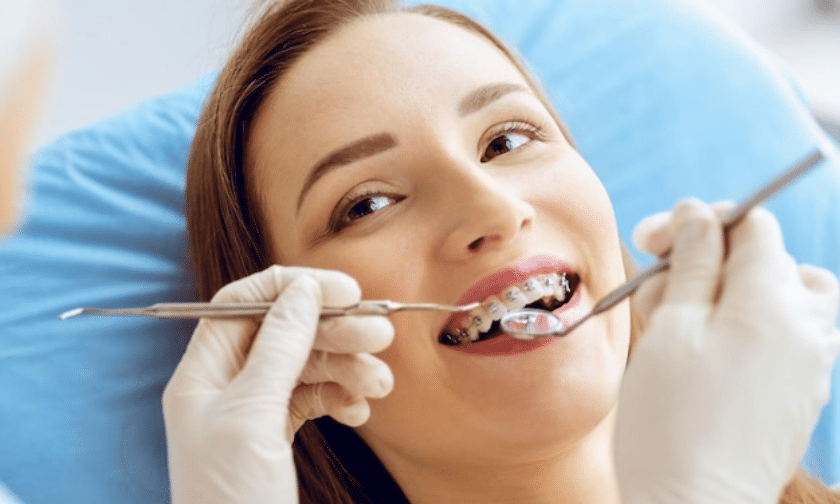An Unbiased View of Legacy Orthodontics
An Unbiased View of Legacy Orthodontics
Blog Article
Excitement About Legacy Orthodontics
Table of ContentsExcitement About Legacy Orthodontics3 Easy Facts About Legacy Orthodontics Explained4 Simple Techniques For Legacy OrthodonticsThings about Legacy OrthodonticsFacts About Legacy Orthodontics Revealed
At Advanced Orthodontics, we give individuals with a all natural therapy experience. In addition, we provide flexible treatment schedules, adaptable payment options and a fun, pleasurable experience. braces. Phone call ( 480) 357-4900 today to learn more and timetable a consultation.An orthodontist is a dentist trained to identify, prevent, and deal with teeth and jaw irregularities. They fix existing problems and are educated to identify problems that might create in the future. Orthodontists work with individuals of any ages, from kids to grownups. People commonly link an ideal smile with healthiness.
Malocclusion, or misaligned teeth, can result in oral problems, consisting of dental caries, gum disease, and difficult or agonizing eating. Not every person is born with straight teeth. If you have a negative bite or big areas between your teeth, you may want to consult a dentist concentrating on orthodontic treatment.
6 Easy Facts About Legacy Orthodontics Described
( Photo Credit History: DigitalVision/Getty Images) Orthodontists make use of taken care of and detachable oral devices, like braces, retainers, and bands, to transform the position of teeth in your mouth. Orthodontic therapy is for oral irregularities, consisting of: Uneven teethBite problems, like an overbite or an underbiteCrowded teeth or teeth that are as well far apartJaw misalignmentThe goal of orthodontic therapy is to boost your bite.
A healthy and balanced bite guarantees you can consume, chew, and talk correctly. While you may believe of orthodontists as primarily for children or teens that require braces, they can deal with dental issues at any age. Orthodontists attend college, oral institution, and orthodontic institution. After college graduation, they spend 2 or 3 years in an orthodontic residency program.
All orthodontists are dentists, but not all dental experts are orthodontists. Orthodontic residency programs offer extensive, focused guideline for oral experts. They focus on 2 locations: Exactly how to effectively and safely move teeth How to effectively direct development in the teeth, jaw, and faceOnce an orthodontist has finished training, they have the choice to come to be board accredited.
3 Simple Techniques For Legacy Orthodontics
Misalignment, or malocclusion, is the most usual reason people see an orthodontist. It is genetic and is the result of dimension distinctions between the top and reduced jaw or between the jaw and teeth. Malocclusion causes tooth congestion, a misshapen jaw, or uneven bite patterns. Malocclusion is typically treated with: Your orthodontist connects steel, ceramic, or plastic square bonds to your teeth.
If you have just minor malocclusion, you may have the ability to utilize clear dental braces, called aligners, as opposed to conventional braces (https://rounded-smash-8f7.notion.site/Your-Perfect-Smile-Awaits-Discover-the-Best-Leesburg-Orthodontist-11161198f5d88039973ce09db494c7c4?pvs=4). Some individuals require a headwear to aid move teeth into line with pressure from outside the mouth. After braces or aligners, you'll require to use a retainer. A retainer is a custom-made gadget that maintains your teeth in position.
They can produce added room in the mouth without having to pull teeth. Orthodontists make use of wires, surgical screws, or plates to sustain your jaw bone.
You may need to see an orthodontist if you have: Crowding or not enough space for every one of your teethOverbite, when your upper teeth come by your base teethUnderbite, when your bottom teeth are as well much forwardSpacing or problems with gapsCrossbite, which is when your upper teeth fit behind your bottom teeth when your mouth is closedOpen bite or a vertical void in between your front base and top teethMisplaced midline, when the center of your base and upper teeth do not align Correcting a dental malocclusion can: Make biting, chewing, and talking easierImprove the proportion of our face and your general appearanceEase pain from temporomandibular joint problemsSeparate your teeth and make them much easier to cleanse, aiding protect against dental cavity or dental caries It's typically a dental practitioner who first notifications misaligned teeth throughout a regular test.
Facts About Legacy Orthodontics Revealed

During your very first orthodontic appointment, you'll likely have: An oral examPhotos taken of your face and smileDental X-raysPanoramic (360 level) X-rays of your face and headImpressions to produce molds of your teethThese examinations will aid your orthodontist recognize exactly how to continue with your therapy. leesburg invisalign. An orthodontist is a dental expert who's had training to treat your teeth and jaw
An orthodontist is focused on your bite, so something like a damaged tooth would certainly be dealt with by a dental practitioner. Orthodontists are concentrated on your bite, or the method your teeth fit with each other, and the straightness of your teeth.
Ever before wondered just how stars always seem to have completely aligned teeth? The solution commonly depends go right here on the skilled hands of an orthodontist. What exactly does an orthodontist do? Orthodontists are dental experts that concentrate on correcting abnormalities in the teeth and jaws. Their experience goes beyond simply creating an attractive smile; it expands to boosting your overall dental health and function.
7 Simple Techniques For Legacy Orthodontics

While braces are one of the most frequently identified orthodontic therapy, orthodontists have a diverse toolkit at their disposal. The details approach picked relies on the severity of the instance, the client's age, and private preferences. These tried-and-true braces use a system of brackets bonded to the teeth and linked by cords.
Clear aligners, like Invisalign, are a popular choice for clients seeking a more discreet therapy alternative. These detachable trays are tailor-made to progressively change the teeth's placement. Headwear may be made use of in conjunction with braces or aligners to apply additional targeted pressures, especially for dealing with jaw inconsistencies. In cases of narrow jaws, palatal expanders can be utilized to develop room for appropriate tooth positioning.
Report this page